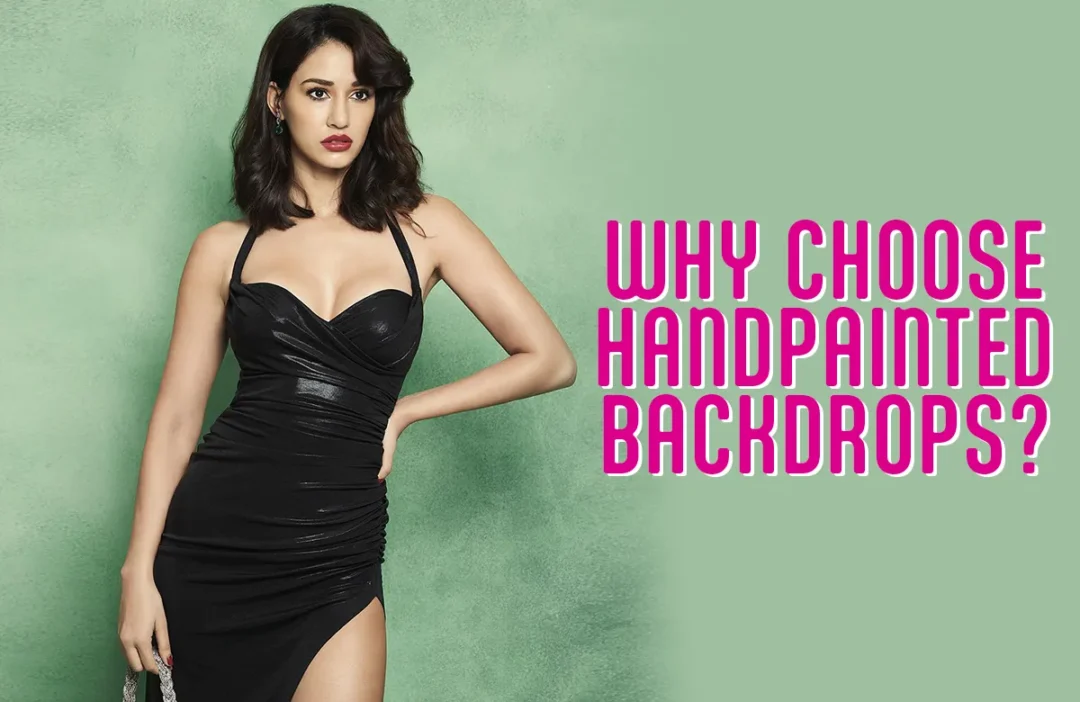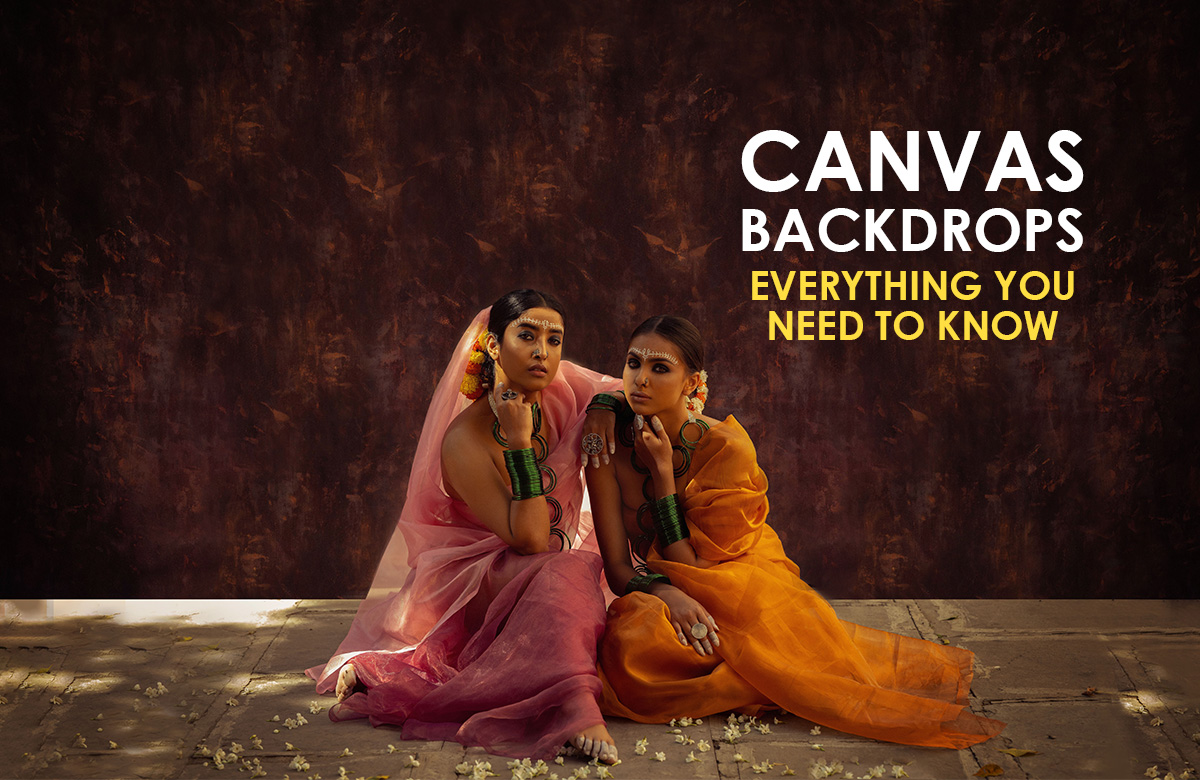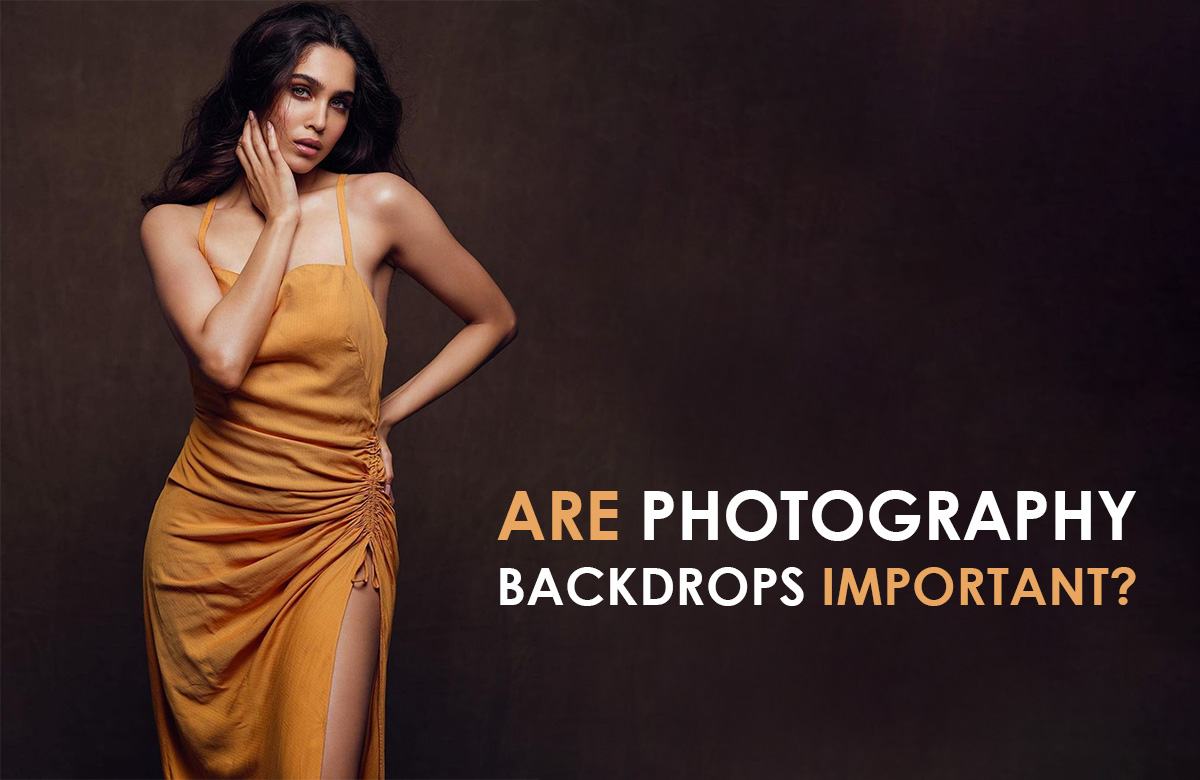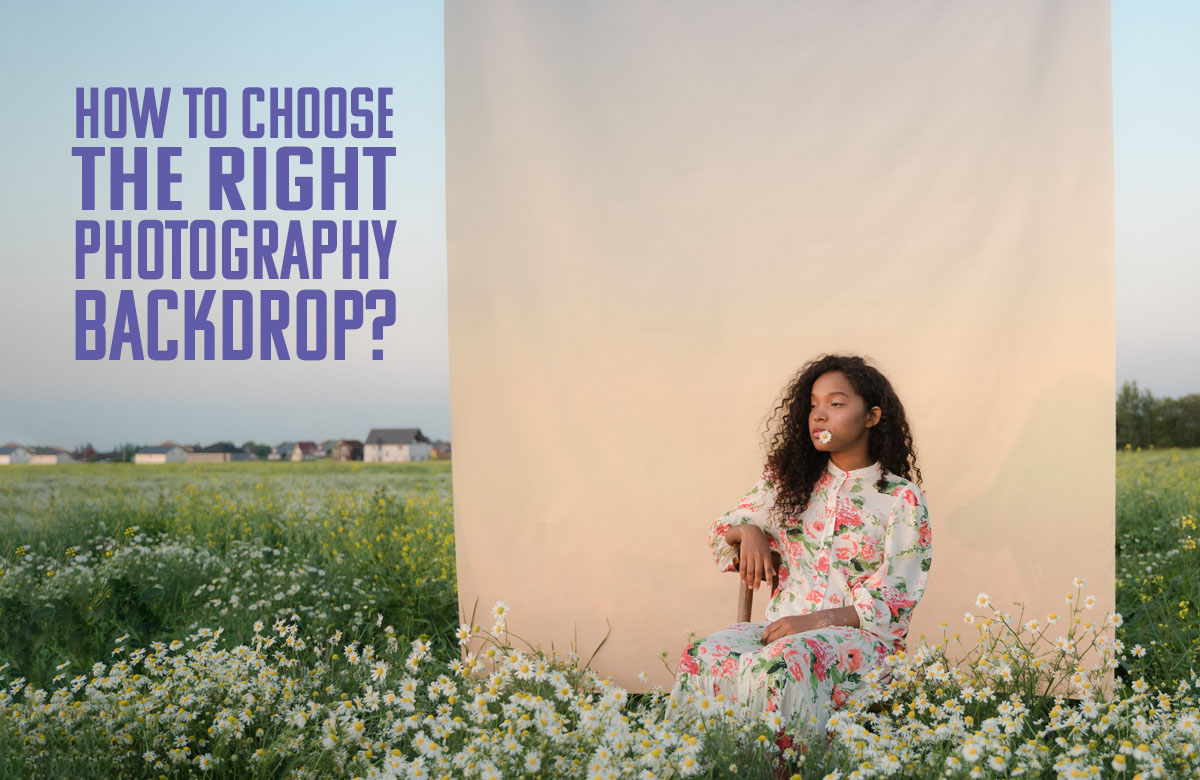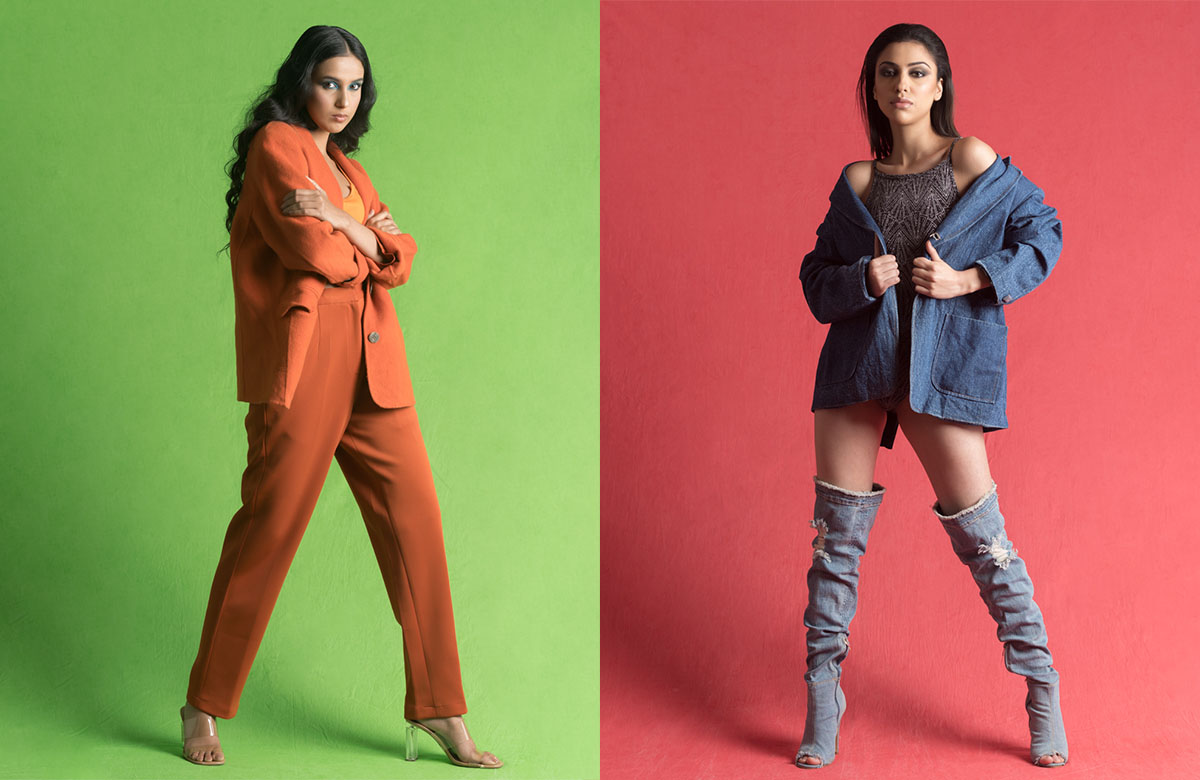Freeing background from unnecessary clutter is like second nature to any photographer. And Cloth Backdrops are the most essential tools in this exercise. The increasing importance of digital advertising and social media-based entrepreneurship has increased the demand for cloth backdrops. So, an understanding of these backdrops is vital to make your photography stand out. It is what separates professionals from amateurs.
If you want to target the precise mood of the photoshoot. And address the ever-rising demand of clients for ‘uniqueness. And take your portrait from basic level to inspirational – then cloth backdrops are the way to go! After all, what’s behind the subject is as important as what’s in front of it.
What are Cloth Backdrops?
Simply put, cloth backdrops are the fabric-based screen or background that separates your main subject from the overall image. Their main purpose is to add a depth effect to the subject. Photographers prefer them in areas of portrait photography, fashion photography, and baby photography. They play a role in controlling the light conditions and adding a surrounding effect. And that makes them useful for product photography and shooting videos too. The diverse varieties of colours, styles, and textures that they offer, make them very versatile. They can build an extra appeal to the photo’s subject, aiding better communication with the viewers. This instantly makes them professionals’ favourites!
Types of Backdrops
When it comes to varieties of cloth backdrops, the sky is the limit! Hence, sorting through the choices and finding the best-suited cloth backdrop for your shoot can give you an edge. The three most popular variants of fabric to choose from are Canvas, Muslin, and Polyester.
Canvas Backdrops
Canvas backdrops are a classy variety that offers a wide range of subtle and dramatic patterns. They provide an interesting background to a portrait without competing with the main subject for attention. The canvas backdrops that we offer are all minimum 250gsm (gram per square meter) fabric, offering a firm background to the image. Within this material, we offer two kinds of backdrops – Solid and Handpainted. The handpainted category offers unique designs and patterns all created by a team of experienced artists. Brushwork and Airbrushed designs provided by us are especially preferred for highlighting the subject in depth, as you can see here. With Scenic and Textured backdrops, we provide vibrant sceneries and elaborate designs that frees you from the hassle of creating a set. In fact, these backdrops have an exceptional appeal to viewers’ emotions, making them want to stop and look at your creation!
Muslin Backdrops
Muslin backdrops are much lighter and thinner, as they are constructed from cotton. Our muslin backdrop thickness starts from 165gsm. We provide two main types here – Mottled Muslin and Single Colour Muslin. The Mottled variety in turn offers splendid versatility such as 3D, Crush Dyed, Handpainted, Solid, Washed, and Reversible. They offer a solid-looking background when hung flat and can also be draped over different surfaces to transform the look of a picture.
By manipulating how it hangs these backdrops can be used to utilize the studio space in the most effective way! With the Single Color variant, you can experiment and explore the different background lighting techniques to give the portrait a neutral or dramatic touch. These backdrops are particularly in demand for their price reasonability. They are also conveniently portable and do not wrinkle very easily- earning them a dominant position in the market.
Polyester Backdrops
Another type of fabric backdrop that is gaining prominence is Polyester, particularly because they are free from shrinkage and wrinkles. They are washable, very convenient to store, and offer high resistance to wear and tears, hence very long-lasting as well. Another unique advantage of using polyester fabric is the fact that they absorb light rather than reflect it, aiding in glare-free shots.
The film industry prefers cloth backdrops because they are very convenient in shooting a scene inside the studio. You can easily artificially edit them (like the green screen editing) and replace with the required natural environment like a beach, forest, etc.
The pros of using cloth backdrops
The market for photography backdrops has expanded exponentially in the last few years. A wide variety of materials are available today. And yet cloth backdrop is a preferred choice for professionals worldwide for several reasons.
- Durability: Cloth backdrops are called ‘legacy’ purchases for their durability factor. Canvas backdrops are a long-term investment. Muslin and Polyester are easily reusable. They also withstand normal wear and tear.
- Storage and Transportation: Backdrops often become damaged or unusable if not stored properly. But with muslin backdrops, you can just stuff them in the bag when done. Canvas backdrops require some caution and are stored in shipping tubes for ease.
- Appearance: Canvas provides a formal look with very refined and finished results loved by the best photographers worldwide. The visual advantage of Muslin is that it holds dye better than any other fabric so the colours on backdrops appear very vivid and saturated.
- Non-Reflective Surface: The flash of a camera or shine of the spotlight when it gets reflected by the backdrop, creates a distraction from the main subject. To avoid this, we offer high-quality absorbent fabric that absorbs light instead of reflecting it.
- Price reasonability: For backdrops, some people go for cheaper alternatives but a higher cost is inflicted due to the time spent on trying to fix it. The wise can well assess that time is money!
Hence, from the age of hand-painted scenery hung at the back of a stage theatre to the era of digitally designed backdrops, the relevance of cloth backdrops has remained consistent and evolving. No wonder, some of the world’s most famous artistic photographers attribute their stunning portraiture to their selection of cloth backdrops. They are truly the very keystone for bringing the subject of a photo to life-which indeed is the ultimate purpose of photography!
Related posts
Why Choose Handpainted Backgrounds?
A Wide Range of Product Photography Backdrops
Canvas Backdrops: Everything You Need To Know
Introducing the most affordable backdrops!
Are Photography Backdrops Important?
How to choose the right photography backdrop?
Let’s Talk Food Photography Backdrops
Studiobackdrops.com Launches New Muslin Backdrops On Holi
Baby Photography – Guide to choosing the correct Backdrops
Do you need backdrops as a Fashion Influencer?
Wrinkle Resistant Backdrops – A New Addition
Muslin Backdrops – The Dos and Don’ts
Recent Posts
Product categories
- Backdrop Combos 17
- Cameras 32
- Handpainted Backdrops 179
- Lighting & Studio 232
- Muslin Backdrops 283
- Mottled Muslin 144
- Portable Backdrops 81
- Single Color Muslin 58
- Canvas Solid 4
- Deluxe Solid 14
- Solid 40
- Paper Backdrops 286
- Polyester Backdrops 28
- Pro Audio 19
- Tripods, Supports & Rigs 12
- Uncategorized 0
- Vinyl Backdrops 17


